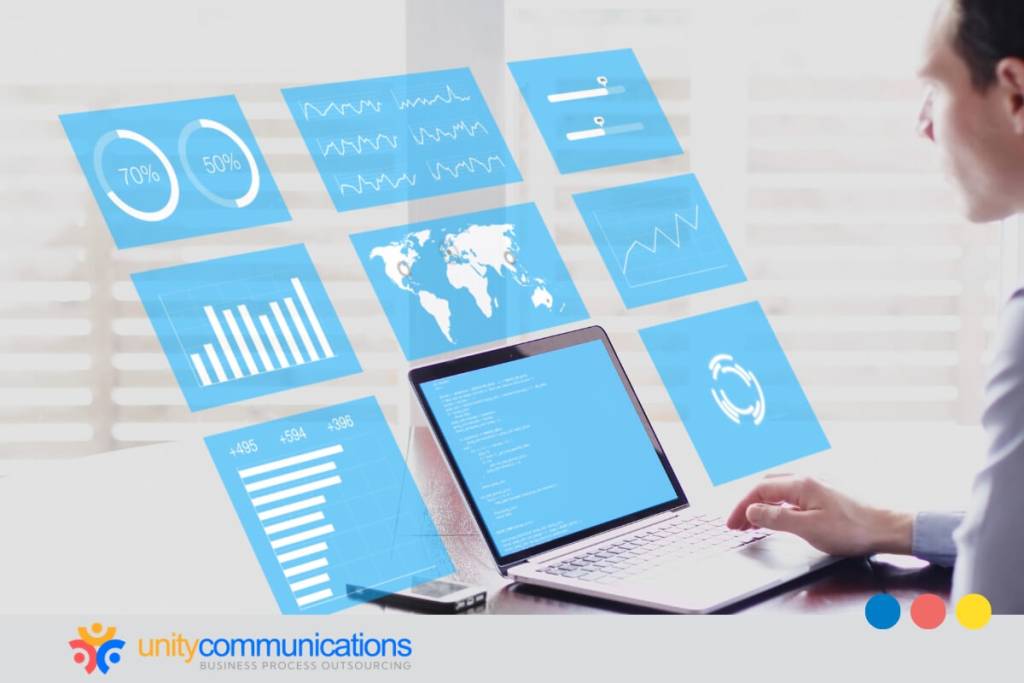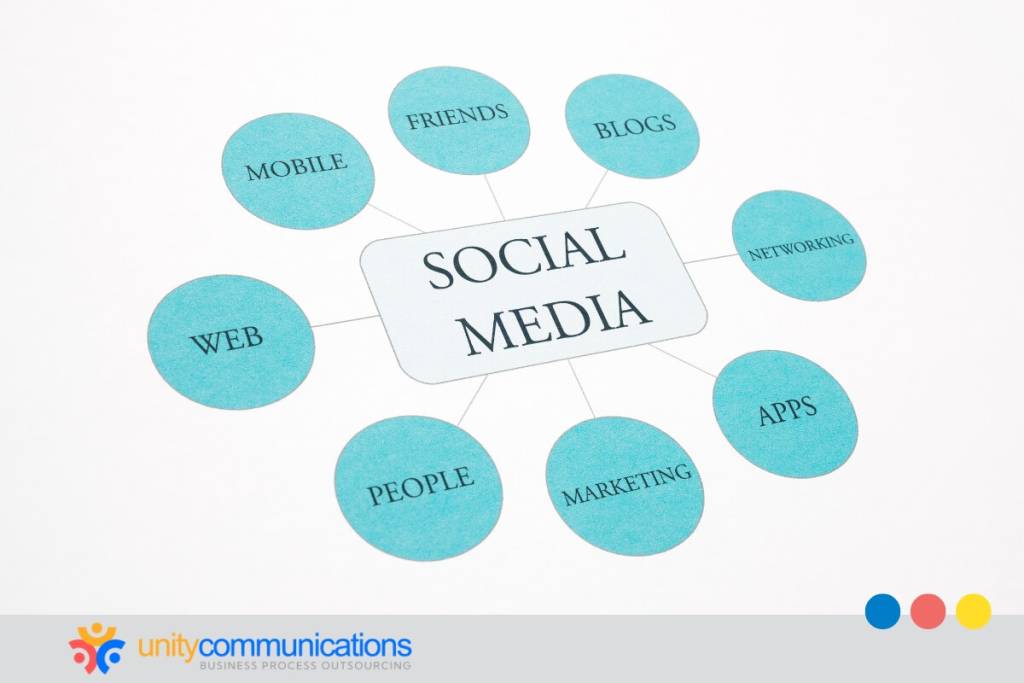Table of Contents
Call center services in Chicago play a vital role in the city’s competitive business environment. As Chicago enterprises strive for excellence, understanding and optimizing key metrics for customer support become critical.
This article discusses essential customer service metrics and why Chicago businesses must monitor and analyze these measures to rise above diverse challenges and rivals. Continue reading to discover how outsourcing helps further drive customer support success.
Why Chicago Businesses Must Prioritize Customer Support Key Metrics
What value do Chicago enterprises gain from understanding key customer support metrics? These quantitative measures, also called key performance indicators (KPIs), assess the performance and efficacy of customer service activities. KPIs allow companies to analyze how effectively they meet customer demands and expectations.
Consumers in the Windy City have strict demands and diverse expectations. Check out some interesting points:
- High anticipation for ease. Customers in a crowded metropolis such as Chicago are likely to prioritize comfort. They seek businesses that offer simplified procedures, rapid response times, and efficient services to match their fast-moving lifestyle.
- Individualized journeys. Chicagoans value personalized and specialized experiences. Businesses that offer timely, practical, and tailored services can gain an edge in this competitive marketplace.
- Elevated service norms. Chicago is home to highly educated workers and over 400 major corporations; better customer service is the norm, not the exception. Local companies commonly strive to meet or exceed industry standards to stay on top of consumers’ minds.
- Digital-savvy community. As an iconic metropolis, Chicago has a digitally sophisticated population accustomed to cutting-edge services and amenities. Customers will almost certainly expect businesses to leverage technology to deliver easy-to-navigate, helpful, and customized services.
- Multicultural cityscape. Chicago is a multilingual urban center with a rich cultural blend. City customers often have many preferences and standards due to their experiences with varied services and activities.
Chicago businesses can leverage relevant customer support key metrics to identify trends, enhance operational efficiency, and address issues better. This data-driven approach allows businesses to elevate consumer experiences and stay competitive in an aggressive market.
How Chicago Firms Benefit From Leveraging Customer Support Key Metrics
Chicago enterprises must understand the connection between key customer support metrics and overall business performance. They can gain the following advantages when leveraging customer service KPIs:
- Proactive issue resolution. KPIs empower Chicago businesses to detect patterns and trends in customer issues. As such, they can address common problems before they escalate, reducing ticket volume and increasing customer satisfaction.
- Optimized resource allocation. Analyzing metrics aids businesses in allocating resources more effectively. By knowing peak support periods and optimizing staffing levels, companies can ensure they have the right resources to meet customer demands efficiently.
- Improved customer satisfaction. KPIs enable Chicago organizations to gauge buyer satisfaction levels accurately. Monitoring key customer support metrics helps them identify areas that need improvement and implement strategies to boost consumer happiness, retention, and loyalty.
- Better savings and returns on investment (ROI). Managing customer support through key metrics efficiently contributes to higher ROI and cost savings. Addressing issues as soon as possible saves resources and improves the cost-effectiveness of operations.
- Data-driven decision-making. Chicago businesses leverage key customer support metrics to make informed decisions. Insights on customer behavior, satisfaction, and issue resolution guide strategic decision-making and align services with expectations.
- Enhanced operational efficiency. Chicago establishments can optimize their customer support processes by leveraging key metrics. Tracking metrics helps spot bottlenecks, fix workflows, and increase efficiency, streamlining customer experiences and solving issues quickly.
- More competitive advantage. Chicago businesses gain a market edge through key customer support metrics. These measures allow them to consistently provide high-quality, data-driven support that sets them apart.
Customer Support KPIs Chicago Businesses Must Measure
Chicago companies must track and optimize key customer support metrics for increased operational efficiency, satisfaction, and competitiveness. Let us delve into the details.
Response Time
Response time refers to how quickly a business acknowledges and responds to customer inquiries or issues. It is a crucial metric impacting overall customer satisfaction and experience.
The ideal response time varies, but replying within 24 hours to emails and social media messages is considered good practice. Optimal live chat service requires answers within minutes. Meanwhile, phone support aims to answer calls promptly and with minimal hold times.
Here’s how Chicago businesses can achieve fast response times as a key metric for customer support:
- Embrace automated tools. Use advanced automation technologies to quickly prioritize and redirect customer requests, decreasing manual handling time.
- Invest in the latest communication technology. Capitalize on cutting-edge communication for smoother interactions and faster reaction times.
- Encourage a responsive attitude. Foster a company-wide culture that appreciates and emphasizes timely customer replies.
First Contact Resolution (FCR)
The FCR in customer support measures the percentage of customer issues resolved during the initial interaction. It covers agents’ ability to address problems without escalation or follow-up.
A high FCR rate indicates satisfactory resolution during the initial communication and minimal follow-up inquiries. The industry standard for an ideal FCR rate is 70%–79%. Operations below 70% require improvement.
Chicago companies can attain a high FCR rate through the following methods:
- Set realistic targets. Establish achievable FCR targets for the support team based on industry standards and inquiry complexity.
- Streamline processes. Simplify internal processes to cut unnecessary steps, enabling customer service representatives (CSRs) to efficiently resolve issues during the initial interaction.
- Integrate customer feedback. Seek and incorporate customer feedback to grasp pain points and continuously improve processes, ensuring support teams can handle diverse issues effectively.
Customer Satisfaction (CSAT) Score
The CSAT score measures consumers’ satisfaction with a product or service, frequently expressed through surveys or feedback. The ideal CSAT score is generally high. Expectations in the industry vary, but a respectable result is often between 75% and 85%.
Chicago organizations can boost this customer support key metric with these steps:
- Understand customer expectations. Know the unique expectations of Chicago customers. Conduct market research and gather insights to tailor services to the specific needs and preferences of the local clientele.
- Implement personalized experiences. Provide individualized customer experiences by leveraging data and offering customized solutions. Personalization fosters a sense of connection and increases positive feedback.
- Focus on responsive communication. Prioritize timely engagement in consumer inquiries and complaints. Quick replies demonstrate a dedication to customer satisfaction and experience.
Net Promoter Score (NPS)
NPS gauges customer loyalty and satisfaction by asking consumers if they are likely to recommend a product or service to others. A positive NPS (+1 to +100) is ideal, while a score of 50 or more is rated exceptional.
Chicago enterprises can ensure buyers promote their products and services to their network by:
- Investing in staff training. Finance ongoing training for customer-facing personnel. Well-trained CSRs provide excellent service, positively influencing customer perceptions and NPS.
- Using multichannel support. Meet customer preferences with multichannel capacity. A comprehensive approach enhances accessibility and contributes to positive NPS ratings.
- Tracking industry benchmarks. Comparing the Chicago business’s performance to the industry’s NPS standards provides valuable insights and criteria for improvement.
Average Handle Time (AHT)
AHT is the average time a CSR takes to manage a customer encounter from start to finish, including the associated duties.
The ideal AHT varies by industry and inquiry complexity. Generally, it aims to be short without compromising quality. In sectors such as telecommunications or information technology (IT), a good AHT can range from four to ten minutes.
Chicago operations can find success in this key customer support metric through these strategies:
- Implement robust knowledge bases. Maintain comprehensive knowledge bases for support agents, providing swift access to information for efficient inquiry resolution and minimal delays.
- Utilize advanced customer relationship management (CRM) systems. Centralize CRM for streamlined customer data management, ensuring quick access to customer profiles and transaction histories for personalized service.
- Upgrade ticketing system. Automate ticketing for efficient inquiry handling, allowing agents to focus on promptly resolving customer issues.
Average Hold Time
Average hold time is the typical time consumers spend on the phone waiting for assistance. This metric measures the responsiveness of a support team.
The ideal average hold time should be as low as possible for optimal customer satisfaction and efficient issue resolution. Chicago firms should aim for a maximum of two minutes for this customer support key metric.
Here are a few ways to decrease the average hold time:
- Leverage interactive voice response (IVR) systems. Deploy user-friendly IVR for customers to resolve inquiries independently, reducing the need for human intervention and minimizing hold times.
- Prioritize high-volume periods. Analyze peak times, allocate resources, and deploy self-service options to handle high call volumes strategically.
- Offer call-back options. Provide a callback service to customers, allowing them to continue their tasks while their concerns are addressed. This service eliminates prolonged hold times.
Customer Retention Rate (CRR)
CRR is a statistic that measures the percentage of customers a company keeps over a given period. A high CRR demonstrates solid loyalty and satisfaction with support services. Generally, a 35%–84% rate is considered satisfactory, regardless of the industry.
Chicago industries advance this customer support key metric through the following:
- Introduce loyalty programs. Promote loyalty schemes rewarding customers for their continuous patronage. Incentive programs, rebates, and special offers stimulate repeat business and improve customer retention.
- Simplify customer onboarding. A smooth onboarding process for new customers sets a positive tone, influencing long-term retention and strengthening customer relationships.
- Launch customer education programs. Develop education programs to enhance buyers’ and end users’ understanding. Informed customers are more likely to advocate for the company’s products or services.
After-call Work Time (ACW)
ACW refers to the time agents spend completing tasks after concluding a customer interaction, such as documentation, record updates, or post-call notes.
Chicago shops must aim for efficiency with this key customer support metric, minimizing tasks while ensuring accurate documentation and resolution. The average ACW across call centers is 45 seconds, indicating swift post-call completion.
Improve ACW by following these tips:
- Streamline documentation processes. Implement efficient documentation processes to reduce agents’ time on post-call tasks. Simplify forms, utilize templates, and encourage concise but comprehensive notes.
- Execute post-call automation. Explore automation options for routine post-call tasks. Automating repetitive processes reduces manual effort and accelerates post-call work.
- Facilitate collaboration. Create a collaborative environment where agents can seek assistance from colleagues if they encounter challenges during ACW. Teamwork can expedite issue resolution and reduce individual workloads.
Average Abandonment Rate
The average abandonment rate is the percentage of callers who disconnect or abandon their calls before reaching a support agent, indicating dissatisfaction or frustration with wait times.
Ideal abandonment rates are low to minimize caller disconnections. Acceptable rates range between 5% and 8%, with 80% of calls answered within 20 seconds. A 10% increase indicates high territory.
Chicago businesses can prevent call abandonment by:
- Implementing intelligent call routing. Use sophisticated technologies to quickly route calls to available agents. Efficient call distribution reduces wait times and the likelihood of abandonment.
- Utilizing real-time analytics. Employ analytics to track call volumes and identify peak periods. Adjust staffing to prevent potential abandonments.
- Facilitating multichannel support. Offer diverse support channels to accommodate customer preferences, minimizing abandonment risks from dissatisfaction with specific channels.
Transfer Rate
The percentage of customer engagements transferred from one support agent to another or across multiple support channels within a single interaction is referred to as the transfer rate.
Despite the lack of defined industry criteria, ideal transfer rates should be low, indicating the initial agent or channel resolves most issues. Frequent transfers lead to customer frustration, with 89% annoyed by repeating issues to different representatives.
Here’s how a Chicago enterprise can minimize this key customer support metric:
- Analyze transfer patterns. Regularly examine transfer behaviors to identify trends and common causes. Use insights for targeted training or process improvements to prevent future transfers.
- Utilize unified communication platforms. Deploy integrated platforms for seamless agent collaboration, enabling internal consultations or information transfers without involving the customer.
- Provide comprehensive agent training. Offer thorough training to support agents, equipping them with skills to resolve various customer issues without frequent transfers.
For Chicago Firms: Outsource to Optimize Customer Support Key Metrics
Why consider outsourcing call center and customer support-related operations instead of running them in-house?
Collaborating with a business process outsourcing (BPO) company to handle these activities enables Chicago enterprises to maximize customer support operations. Third-party providers specialize in tracking key metrics and consistently delivering exceptional customer satisfaction and experience.
BPO providers offer different functions, such as outbound and inbound call centers and contact center as a service (CCaas) solutions. These services elevate customer relationships and strengthen buyer loyalty, improving sales and revenue.
Consider these steps to identify an affordable and competent nearshore or offshore BPO call center provider:
- Examine the outsourcing methods for customer service. Determine the third-party customer support agents, communication channels, and type of BPO that best suit the company’s targets and anticipated results.
- Assess prospects to identify a BPO partner. Choose partners according to predefined factors such as personnel, talent, accomplishments, and history. Prefer those with dedicated staff members.
- Request each candidate’s fees, rates, and BPO billing details. The prospect’s track record and the Chicago business’s requirements determine the cost of call center services.
- Restrict the number of candidates and gather critical information. Send a request for proposal (RFP) to each short-listed contender, including the task extent, timetable, allocated funds, and required remedies for the outsourced work.
- Elect the third-party provider offering the most substantial benefits. Construct a service-level agreement (SLA) with the new BPO partner. The SLA covers desired services and crucial requirements, such as customer support key metrics.
- Maintain a record of outsourced customer support activities. Assess whether the business partnership meets all of the deadline-driven objectives. Cultivate frequent communication with the BPO partner to increase the chances of rewarding outsourcing.
The Bottom Line
Chicago’s diverse urban setting necessitates businesses excelling in customer support, which is critical for sustained growth and success in the marketplace.
Businesses can succeed by prioritizing and optimizing key customer support metrics and following the abovementioned strategies. Embracing data-driven insights, efficient response times, and streamlined processes increases customer satisfaction and loyalty.
Let’s connect to learn more about how Chicago businesses can leverage customer support as a key metric for success!




